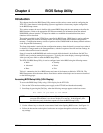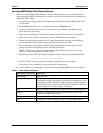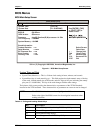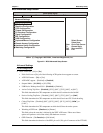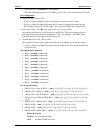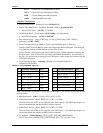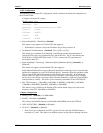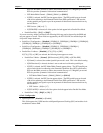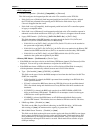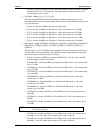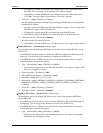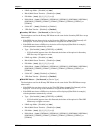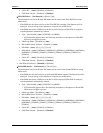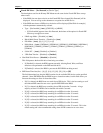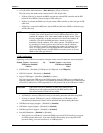
Chapter 4 BIOS Setup Utility
XTX 820 Reference Manual 69
ECP uses the DMA protocol to achieve data transfer rates up to 2.5 Megabits per second.
ECP also provides symmetric bi-directional communication.
• ECP Mode DMA Channel – [DMA0], [DMA1], or [DMA3]
∗ If [EPP] is selected, the EPP Version appears below. The EPP parallel port can be used
with devices adhering to the Enhanced Parallel Port (EPP) specification. EPP uses the
existing parallel port signals to provide asymmetric bi-directional data transfer driven by
the host device.
• EPP Version – [1.9] or [1.7]
∗ If [ECP&EPP] is selected, all of the options for both appear below Parallel Port Mode.
♦ Parallel Port IRQ – [IRQ5] or [IRQ 7]
If you are not using Ampro's baseboard, the following fields may not be detected by the BIOS and
may not appear on screen. These fields are supported by the XTX 820 LPC bus and the Super I/O
chip on the Ampro baseboard.
• Serial Port 3 Configuration – [Disabled], [3F8/IRQ11], [2F8/IRQ10], [3E8/IRQ11], [2E8/IRQ10],
[3F8/IRQ10], [2F8/IRQ11], [3E8/IRQ10], or [2E8/IRQ11]
• Serial Port 4 Configuration – [Disabled], [3F8/IRQ11], [2F8/IRQ10], [3E8/IRQ11],
[2E8/IRQ10], [3F8/IRQ10], [2F8/IRQ11], [3E8/IRQ10], or [2E8/IRQ11]
• Parallel Port 2 Address – [Disabled], [378], [278], or [3BC]
If [378], [278], or [3BC] are selected, the following items appear on screen.
♦ Parallel Port 2 Mode – [Normal], [Bi-Directional], [ECP], [EPP], or [ECP & EPP]
∗ If [Normal] is selected, the standard parallel port mode is used. This is the default setting.
∗ If [Bi-Directional] is selected, the data is sent to and received from the parallel port.
∗ If [ECP] is selected, the ECP Mode DMA Channel appears below. The ECP parallel port
can be used with devices adhering to the Extended Capabilities Port (ECP) specification.
ECP uses the DMA protocol to achieve data transfer rates up to 2.5 Megabits per second.
ECP also provides symmetric bi-directional communication.
• ECP Mode DMA Channel – [DMA0], [DMA1], or [DMA3]
∗ If [EPP] is selected, the EPP Version appears below. The EPP parallel port can be used
with devices adhering to the Enhanced Parallel Port (EPP) specification. EPP uses the
existing parallel port signals to provide asymmetric bi-directional data transfer driven by
the host device.
• EPP Version – [1.9] or [1.7]
∗ If [ECP & EPP] is selected, all of the options for both appear below Parallel Port Mode.
♦ Parallel Port 2 IRQ – [IRQ5] or [IRQ 7]
>Clock Configuration
• Spread Spectrum – [Disabled] or [Enabled]
This field supports the LVDS interface with Spread Spectrum Clocking (SSC) and enables clock
modulation to reduce EMI.



